Electrostatics and Electric Circuits Overview
1/93
There's no tags or description
Looks like no tags are added yet.
Name | Mastery | Learn | Test | Matching | Spaced |
|---|
No study sessions yet.
94 Terms
Electrons
Charges outside the atom that carries negative charges.
Protons
Charges at the center of an atom that carries positive charges.
Neutral
An atom that has equal number of protons and electrons, meaning, no overall charge.
Law of Charges
When two objects are rubbed against each other, stationary electric charge is produced.
1st Law of Charge
Opposite charges attract each other. Like charges repel each other.
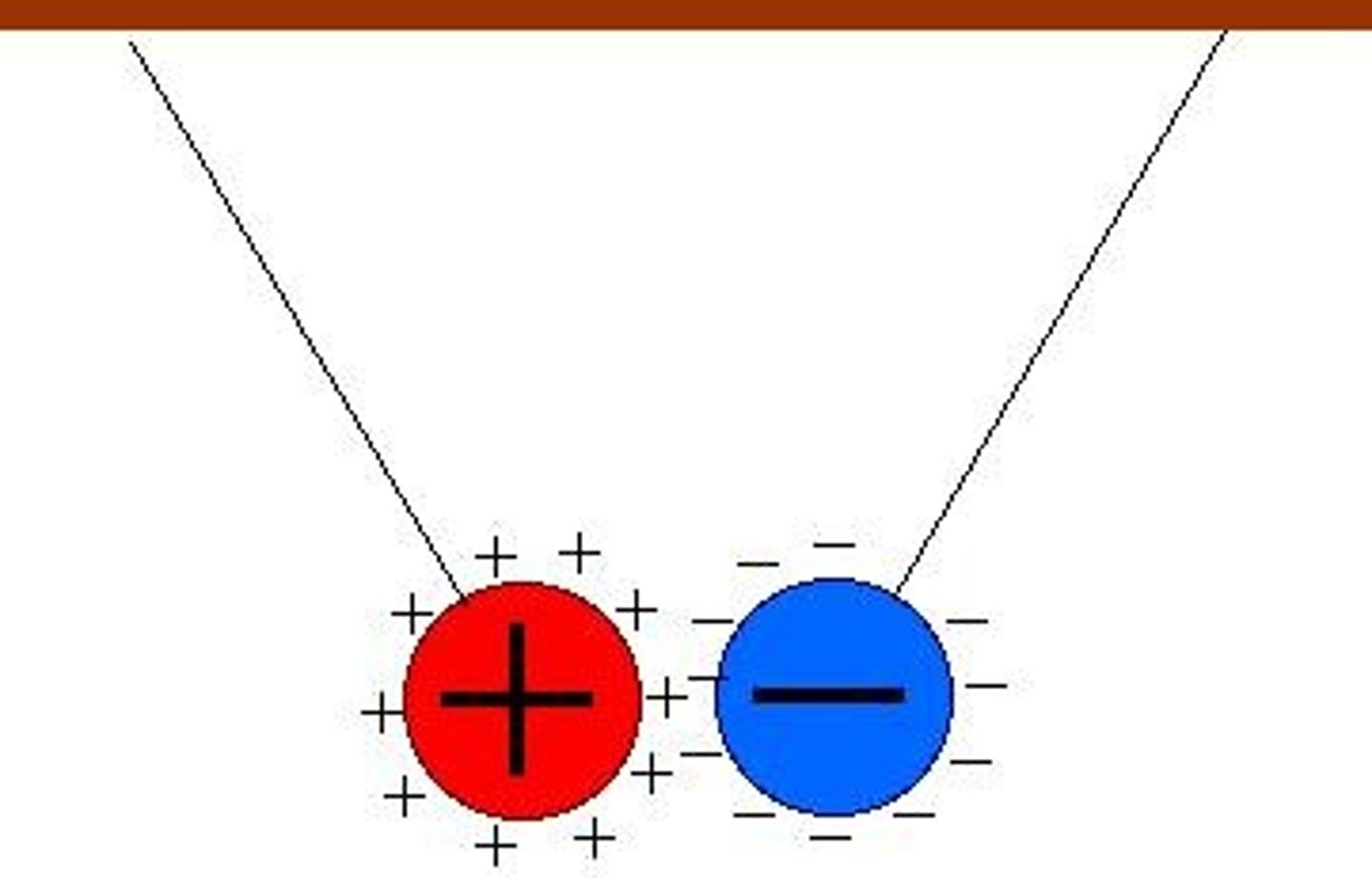
2nd Law of Charge
Induction: There's no physical contact between a charged and neutral body.
Conductors
Materials that allow the electrons to pass or flow through. Best conducting material is silver.
Insulators
Materials that do not allow or hinder the electrons to pass or flow through. Best insulating material is rubber.
Electric Force (Coulomb's Law)
In the SI system of units, electric charge is measured by coulombs (C) in honor of French physicist Charles de Coulomb.
Force of Repulsion
Two charges have the same sign (positive-positive, negative-negative).
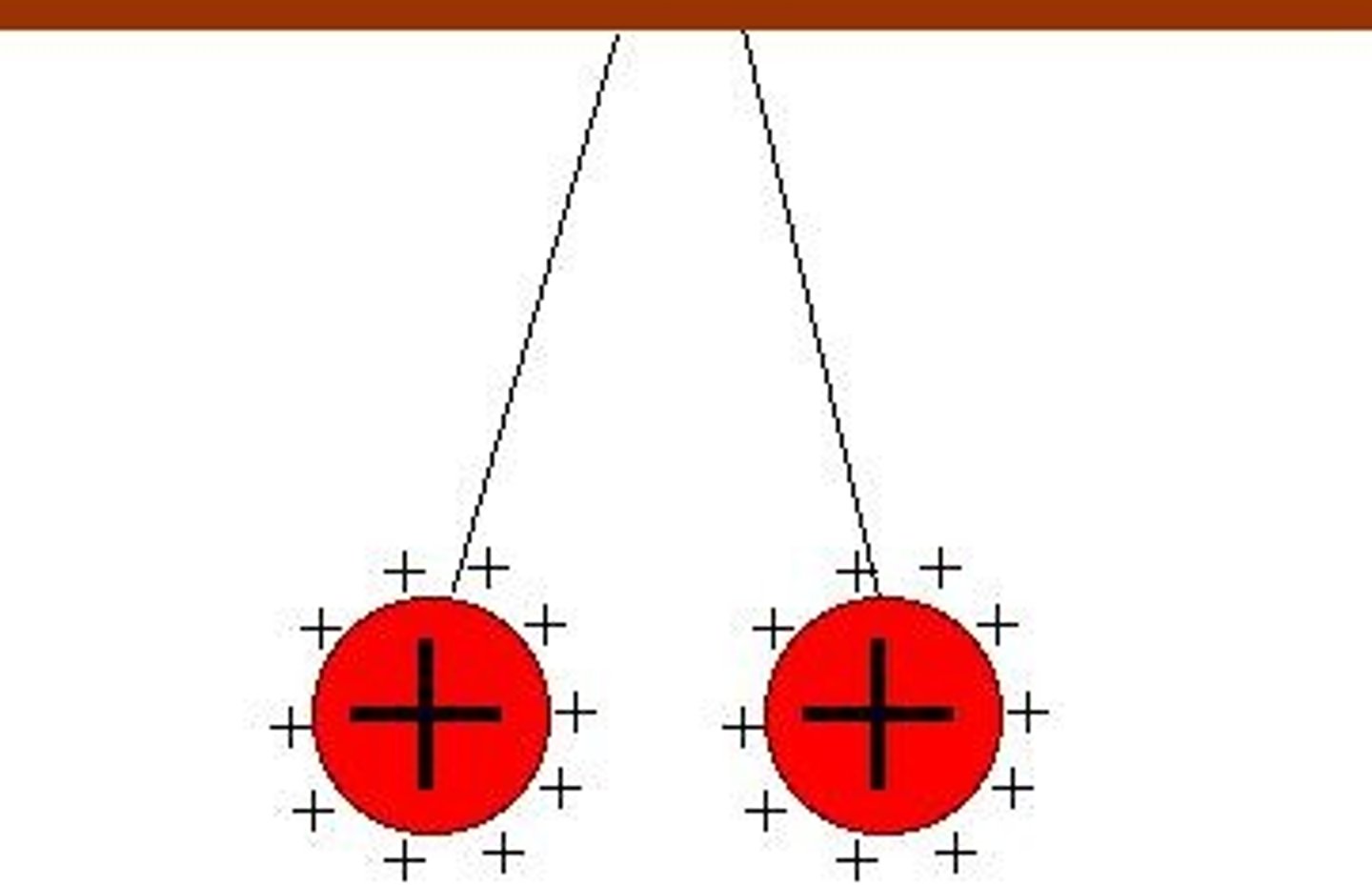
Force of Attraction
Two charges have opposite sign (positive-negative).
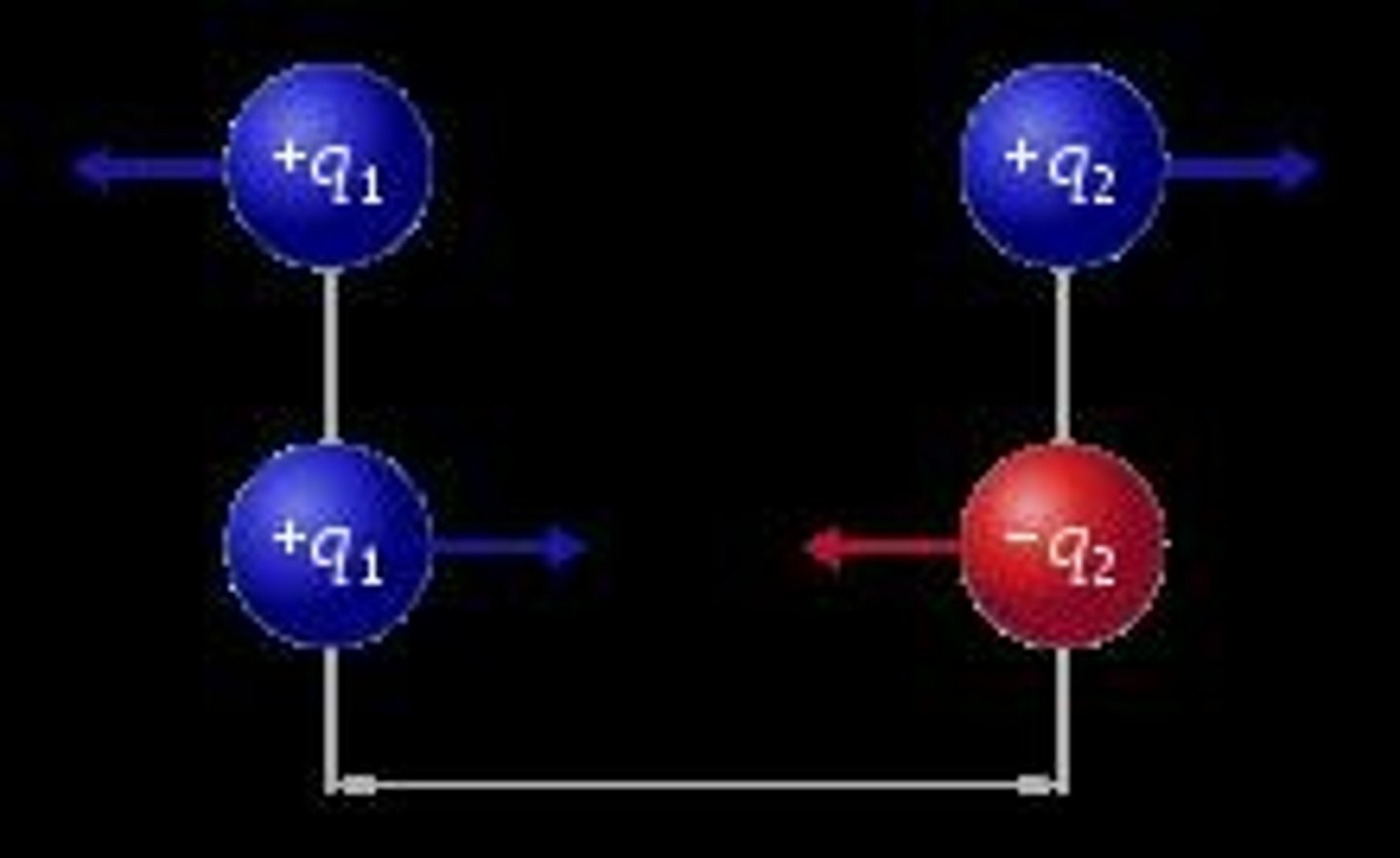
Law of Conservation of Charges
This law states that charge can be transferred from one object to another but cannot be created nor destroyed.
Friction
Results when two objects are rubbed against each other.
Coulomb's Law
The mathematical formula to calculate the electrostatic force between two charged particles q1 and q2 separated by a distance r.
Electric Charge
The physical property of matter that causes it to experience a force when placed in an electromagnetic field.
Charging Process
Three processes of charging: Friction, Conduction, Induction.
Potential Difference (Voltage)
The difference in electric potential between two points.
Electric Potential Energy
The energy a charged object has due to its position in an electric field.
Electric Field
A field around charged particles that exerts a force on other charged particles.
Capacitance
The ability of a system to store an electric charge.
Ohm's Law
The relationship between current, voltage, and resistance in an electrical circuit.
Circuit
A complete path through which electric charges can flow.
Series Circuit
A circuit in which the components are connected in a single path.

Parallel Circuit
A circuit in which the components are connected across common points or junctions.
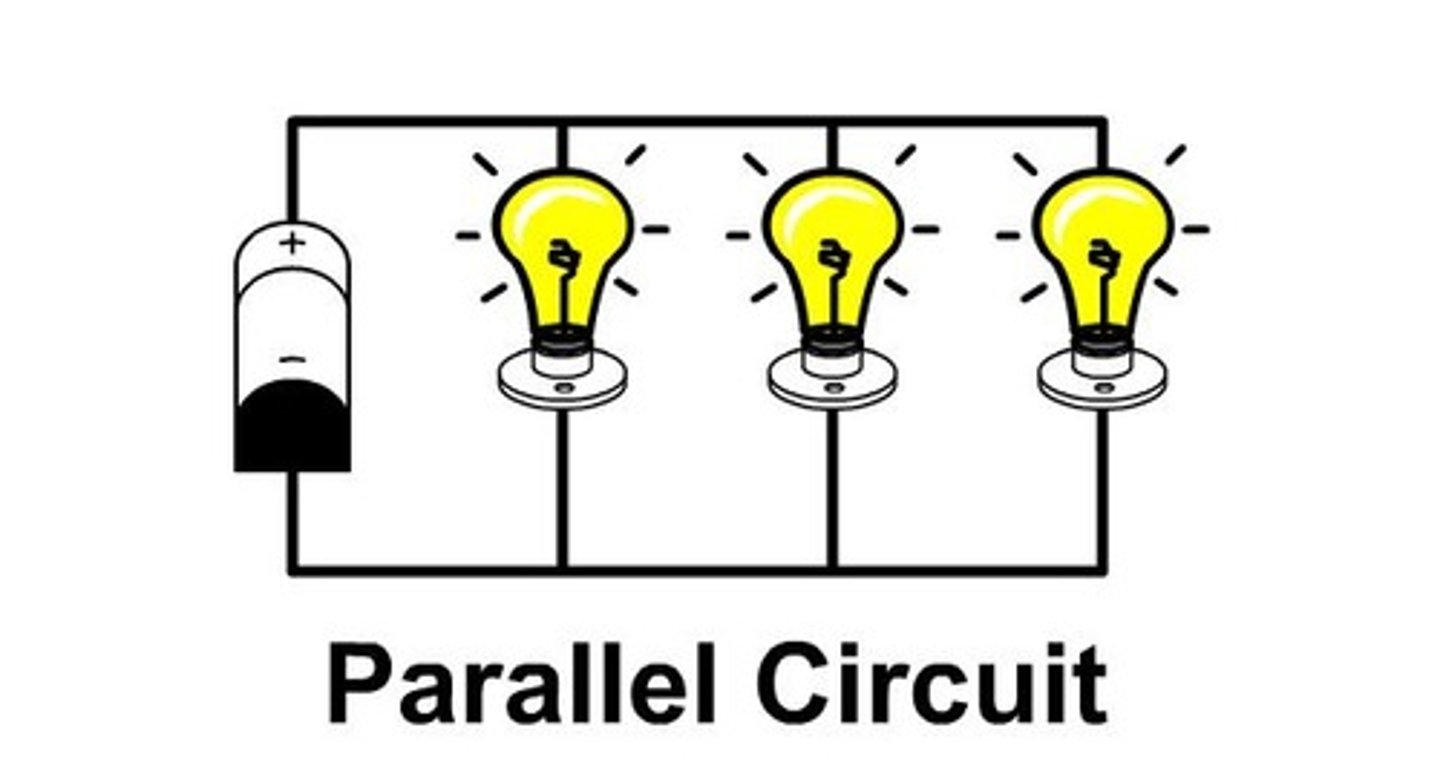
Coulomb's Law
𝑭= 𝒌𝒒𝟏𝒒𝟐/𝒓𝟐
Conduction
Results when there's a physical (direct) contact between a charging and a neutral body.
Second charge
𝑞2
New 2nd charge (doubled)
𝟐𝒒𝟐
Distance
𝑟
Force
𝑭: force between charges expressed in Newtons (𝑁)
Point charges
𝒒𝟏 𝒂𝒏𝒅 𝒒𝟐: point charges expressed in coulomb (𝐶)
Distance between charges
𝒓: distance between the two charges in meter (𝑚)
Coulomb's constant
𝒌= 𝟖. 𝟗𝟖𝟖× 𝟏𝟎𝟗𝑁𝒎𝟐
Magnitude of electric force
The magnitude of the electric force 𝐹 is directly proportional to the amount of one electric charge 𝑞1 multiplied by other 𝑞2, and inversely proportional to the square of the distance 𝑟 between their centers.
New electric force (doubled charges)
If both charges are doubled to 2𝑞1 and 2𝑞2 but the distance 𝑟 remains the same, the new electric force is _____ the old force.
New electric force (distance doubled)
If both charges remain the same but the distance 𝑟 is doubled, the new electric force is _____ the old force.
Conversion of Units
1 ∁ = 1,000,000 𝝁∁
Electric force when distance is doubled
The new electric force is 1/4 times weaker than the old force.
Force of repulsion
The force of repulsion between two objects is 4.5 × 10^9 𝑁.
Distance between charges
If the charges of the objects are 2 𝐶 and 1 𝐶, determine the distance between them.
Electrical force between charges
Determine the force and the type of electrical force between two charges where one has a charge of +2 𝐶 and the other one has −1 𝐶 positioned 2 𝑚 from each other.
Magnitude of repulsive force
Calculate the magnitude of the repulsive force between two balloons with a charge of −4.0 𝜇∁ held 0.70 𝑚 apart.
First charge
1st charge (remains): 𝒒𝟏
Second charge
2nd charge (remains): 𝒒𝟐
Given values for calculation
𝑞1 = +2 ∁, 𝑞2 = +3 ∁, 𝑟= 0.5 𝑚
Force calculation
Using Coulomb's Law, compute for the unknown variables.
Electric field
IV. Electric field
Electric Field
The region where an electric force acts on charged body.
Direction of Electric Field (Positive Charge)
Away (outwards) from the charge.
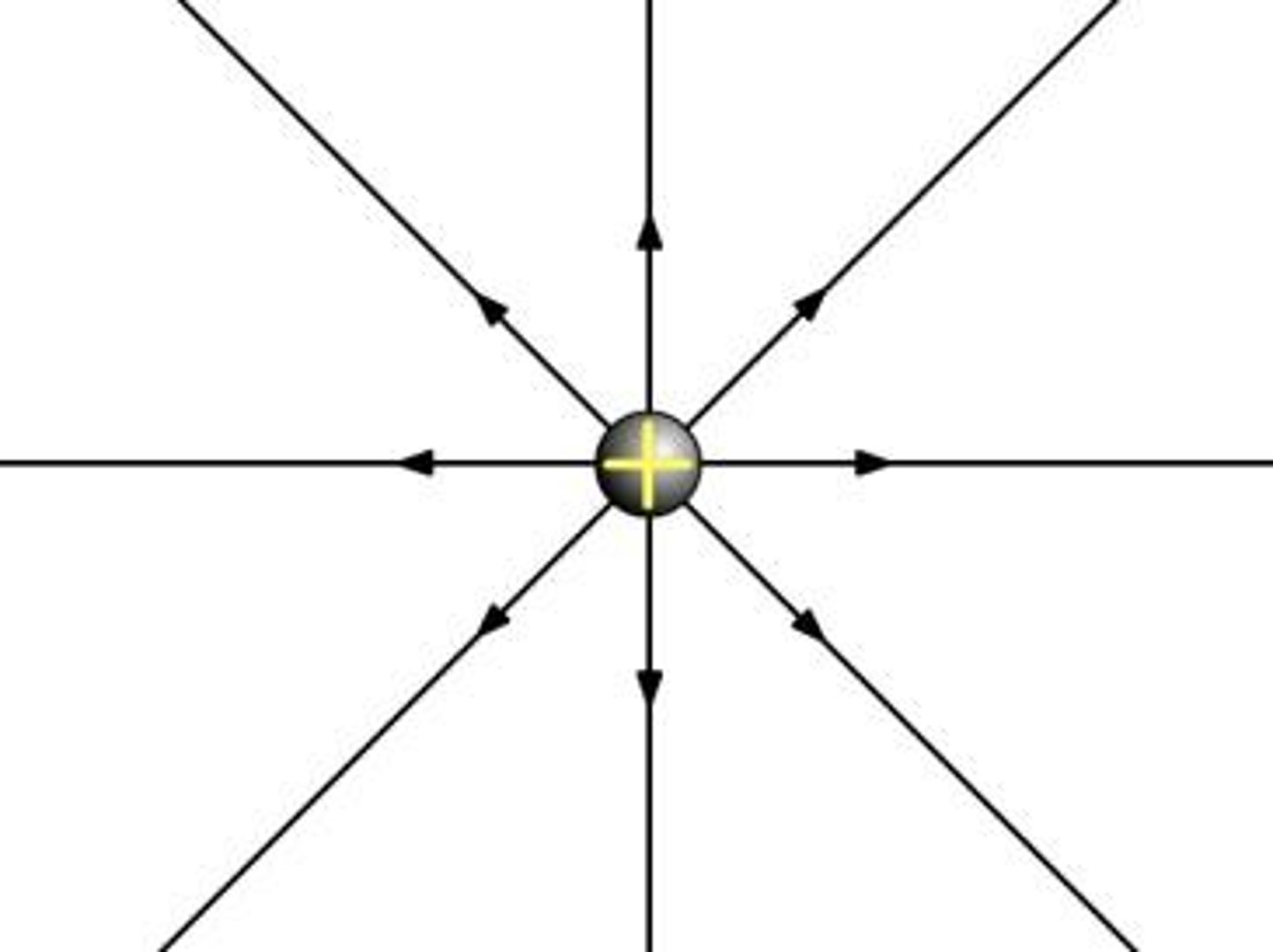
Direction of Electric Field (Negative Charge)
Inwards towards the charge.
Intensity of Electric Field
Operationally defined as the ratio of the electric force 𝐹 to the charge 𝑞 placed at that point in the field.
Electric Field Formula (Force)
𝑬 = 𝑭/𝒒
Electric Field Formula (Charge)
𝑬 = 𝒌𝒒/𝒓²
Charge Formula (Electric Field)
𝒒 = 𝑬𝒓²/𝒌
Charge Formula (Force)
𝒒 = 𝑭/𝑬
Force Formula
𝑭 = 𝑬𝒒
Units of Electric Field
Expressed in Newtons per Coulomb (𝑁/𝒞).
Units of Force
Expressed in Newtons (𝑁).
Units of Charge
Expressed in Coulombs (𝐶).
Distance Between Charges
Expressed in meters (𝑚).
Coulomb's Constant
𝒌 = 8.988 × 10⁹ 𝑁𝑚²/𝐶².
Electric Potential Energy
The energy needed to move an electric charge against an electric field.
Electric Potential
Defined as the amount of electric potential energy per unit charge.
Electric Potential Energy Formula
𝑼 = 𝒒𝑬𝒓
Electric Potential Formula
𝑽 = 𝑼/𝒒
Electric Potential Energy Units
Expressed in Joules (𝑱).
Electric Potential Units
Expressed in Volts (𝑽).
Example Charge
A charge of 0.000025 ∁ is placed in an electric field whose intensity is 8.0 × 10⁶ N/∁.
Force Calculation Example
𝑭 = (8.0 × 10⁶ 𝑁/∁)(0.000025 ∁) = 200 𝑁.
Electric Potential Energy Calculation Example
For charges +3 𝜇∁ and -2 𝜇∁ positioned 1 𝑚 apart, calculate using 𝑼 = 𝒌𝒒₁𝒒₂/𝒓.
Distance Conversion Example
8 𝑐𝑚 = 0.08 𝑚.
Electric Potential (EP)
The energy stored directly onto the plates of a capacitor.
Formula for Electric Potential (V)
V = kq/r, where k = 8.988 x 10^9 N m^2/C^2 and q = 7.58 x 10^-12 C.
Current (I)
The rate of flow of charge per unit time, expressed as I = q/t.
Unit of Current
Ampere (A), named after Andre-Marie Ampere.
Resistance (R)
The electric property that impedes the flow of current.
Unit of Resistance
Ohms (Ω).
Electric Potential Difference
The difference in electric potential between the final and initial location when work is done upon a charge.
Ohm's Law
States that the current flowing through a circuit is directly proportional to the potential difference and inversely proportional to the resistance.
Capacitance
The ability of a device to store electric charge.
Dielectric
A material used to separate the conductive plates of a capacitor, allowing for smaller plate separations and higher capacitance.
Voltage (V)
The potential difference expressed in volts (V).
Current in a Circuit
The sum of the currents in each branch of a parallel circuit.
Parallel Circuit
An electric circuit with two or more components connected across two common points to allow separate conducting paths.
Series Circuit
An electric circuit with several components arranged to allow current to flow through one single path.
Total Resistance in Series
The sum of the individual resistances in a series circuit.
Total Voltage in Series
The sum of all the individual voltages in the circuit.
Total Current in Series
The same current flows through all parts of the circuit.
Total Resistance in Parallel
The reciprocal of the total resistances is equal to the sum of the reciprocals of the separate resistances.
Example of Current Calculation
What current is in an electric iron having a hot resistance of 22 Ω when across a 200 V line? I = 200 V / 22 Ω = 9.09 A.
Example of Resistance Calculation
What is the resistance of an automobile through which 2.50 A flows when 12.0 V is applied? R = 12.0 V / 2.50 A = 4.80 Ω.
Charging and Discharging Rates
Charging and discharging rates are faster than a battery.
Energy Storage in Capacitors
The potential energy is stored in the electric field.
Energy Storage in Batteries
The potential energy is stored in the form of chemical energy, which is later converted to electric energy.